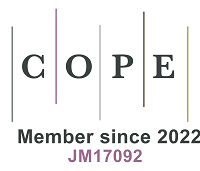REFERENCES
1. Antar, M.; Lyu, D.; Nazari, M.; Shah, A.; Zhou, X.; Smith, D. L. Biomass for a sustainable bioeconomy: an overview of world biomass production and utilization. Renew. Sustain. Energy. Rev. 2021, 139, 110691.
2. Jiang, K.; Xing, R.; Luo, Z.; et al. Pollutant emissions from biomass burning: a review on emission characteristics, environmental impacts, and research perspectives. Particuology 2024, 85, 296-309.
3. Karanasiou, A.; Alastuey, A.; Amato, F.; et al. Short-term health effects from outdoor exposure to biomass burning emissions: a review. Sci. Total. Environ. 2021, 781, 146739.
4. Doubleday, A.; Schulte, J.; Sheppard, L.; et al. Mortality associated with wildfire smoke exposure in Washington state, 2006-2017: a case-crossover study. Environ. Health. 2020, 19, 4.
5. DeFlorio-Barker, S.; Crooks, J.; Reyes, J.; Rappold, A. G. Cardiopulmonary effects of fine particulate matter exposure among older adults, during wildfire and non-wildfire periods, in the United States 2008-2010. Environ. Health. Perspect. 2019, 127, 37006.
6. Weichenthal, S.; Kulka, R.; Lavigne, E.; et al. Biomass burning as a source of ambient fine particulate air pollution and acute myocardial infarction. Epidemiology 2017, 28, 329-37.
8. Levy, R. J. Carbon monoxide pollution and neurodevelopment: a public health concern. Neurotoxicol. Teratol. 2015, 49, 31-40.
10. Chen, Z.; Liu, N.; Tang, H.; et al. Health effects of exposure to sulfur dioxide, nitrogen dioxide, ozone, and carbon monoxide between 1980 and 2019: a systematic review and meta-analysis. Indoor. Air. 2022, 32, e13170.
11. Chen, R.; Yin, P.; Meng, X.; et al. Associations between ambient nitrogen dioxide and daily cause-specific mortality: evidence from 272 Chinese cities. Epidemiology 2018, 29, 482-9.
12. Wang, L.; Liu, C.; Meng, X.; et al. Associations between short-term exposure to ambient sulfur dioxide and increased cause-specific mortality in 272 Chinese cities. Environ. Int. 2018, 117, 33-9.
13. McGraw, K. E.; Riggs, D. W.; Rai, S.; et al. Exposure to volatile organic compounds - acrolein, 1,3-butadiene, and crotonaldehyde - is associated with vascular dysfunction. Environ. Res. 2021, 196, 110903.
14. Kim, K. H.; Jahan, S. A.; Kabir, E.; Brown, R. J. A review of airborne polycyclic aromatic hydrocarbons (PAHs) and their human health effects. Environ. Int. 2013, 60, 71-80.
15. Xia, Z.; Duan, X.; Qiu, W.; et al. Health risk assessment on dietary exposure to polycyclic aromatic hydrocarbons (PAHs) in Taiyuan, China. Sci. Total. Environ. 2010, 408, 5331-7.
17. Hay, W. W. Water vapor - the major greenhouse gas. In Experimenting on a small planet. Springer International Publishing: Cham; 2021. pp 477-90.
18. Etminan, M.; Myhre, G.; Highwood, E. J.; Shine, K. P. Radiative forcing of carbon dioxide, methane, and nitrous oxide: a significant revision of the methane radiative forcing. Geophys. Res. Lett. 2016, 43, 12614-23.
19. Zheng, M.; Song, D.; Zhang, D.; Cao, Y.; Fan, H. Using sulfur isotopes to constrain the sources of sulfate in PM2.5 during the winter in Jiaozuo City. Atmos. Environ. 2024, 332, 120618.
20. IEA. SDG7: data and projections. https://www.iea.org/reports/sdg7-data-and-projections. (accessed 2025-02-13).
21. Gibb, K.; Beckman, S.; Vergara, X. P.; Heinzerling, A.; Harrison, R. Extreme heat and occupational health risks. Annu. Rev. Public. Health. 2024, 45, 315-35.
22. Sacks, J. D.; Migliaccio, C. T.; Reid, C. E.; Montrose, L. Shifting the conversation on wildland fire smoke exposures: more smoke within and across years requires a new approach to inform public health action. ACS. EST. Air.2025.
23. Bui, H. X.; Li, Y.; Dommenget, D. Controlling factors of wildfires in Australia and their changes under global warming. Environ. Res. Lett. 2024, 19, 094030.
26. Aguilera, R.; Corringham, T.; Gershunov, A.; Benmarhnia, T. Wildfire smoke impacts respiratory health more than fine particles from other sources: observational evidence from Southern California. Nat. Commun. 2021, 12, 1493.
27. Ye, T.; Xu, R.; Yue, X.; et al. Short-term exposure to wildfire-related PM2.5 increases mortality risks and burdens in Brazil. Nat. Commun. 2022, 13, 7651.
28. Park, H.; Jeong, S.; Peñuelas, J. Accelerated rate of vegetation green-up related to warming at northern high latitudes. Glob. Chang. Biol. 2020, 26, 6190-202.
29. Mishra, S.; Tripathi, S. N.; Kanawade, V. P.; et al. Rapid night-time nanoparticle growth in Delhi driven by biomass-burning emissions. Nat. Geosci. 2023, 16, 224-30.
30. Khodmanee, S.; Amnuaylojaroen, T. Impact of biomass burning on ozone, carbon monoxide, and nitrogen dioxide in Northern Thailand. Front. Environ. Sci. 2021, 9, 641877.
31. Huzar, T. F.; George, T.; Cross, J. M. Carbon monoxide and cyanide toxicity: etiology, pathophysiology and treatment in inhalation injury. Expert. Rev. Respir. Med. 2013, 7, 159-70.
32. Yadav, I. C.; Devi, N. L. Biomass burning, regional air quality, and climate change. encyclopedia of environmental health. Elsevier; 2019. pp. 386-91.
33. Raju, S.; Siddharthan, T.; McCormack, M. C. Indoor air pollution and respiratory health. Clin. Chest. Med. 2020, 41, 825-43.
34. Zhai, Z.; Yates, A. P.; Duanmu, L.; Wang, Z. An evaluation and model of the Chinese Kang system to improve indoor thermal comfort in northeast rural China - Part-1: model development. Renew. Energy. 2015, 84, 3-11.
35. Bantu, A. A.; Nuwagaba, G.; Kizza, S.; Turinayo, Y. K. Design of an improved cooking stove using high density heated rocks and heat retaining techniques. J. Renew. Energy. 2018, 2018, 1-9.
36. Men, Y.; Li, Y.; Luo, Z.; et al. Interpreting highly variable indoor PM2.5 in rural North China using machine learning. Environ. Sci. Technol. 2023, 57, 18183-92.
37. Heating with wood: a problem for health and climate. 2016. https://www.clean-heat.eu/en/actions/info-material/download/background-paper-residential-wood-burning-3.html. (accessed 2025-02-13).
38. Luo, Z.; Zhang, L.; Li, G.; et al. Evaluating co-emissions into indoor and outdoor air of EC, OC, and BC from in-home biomass burning. Atmos. Res. 2021, 248, 105247.
39. Rooney, B.; Zhao, R.; Wang, Y.; et al. Impacts of household sources on air pollution at village and regional scales in India. Atmos. Chem. Phys. 2019, 19, 7719-42.
40. Balmes, J. R. Household air pollution from domestic combustion of solid fuels and health. J. Allergy. Clin. Immunol. 2019, 143, 1979-87.







